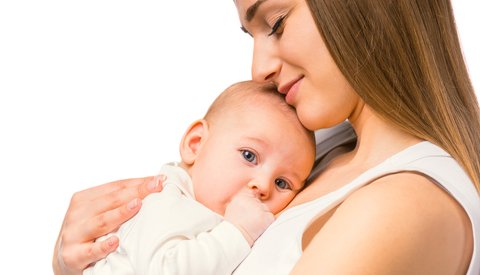The principal developmental task of the first year of life is the establishment of a secure attachment between infant and primary caregiver. In order for this bond of emotional communication to develop the caregiver must be psychologically and biologically attuned to the needs, emotions, and mental state of the child. Beyond the basic function of secure attachment—providing safety and protection for the vulnerable young through closeness to a caregiver—there are several other important functions for children:
• to learn basic trust and reciprocity that serve as a template for all future emotional relationships.
• to explore the environment with feelings of safety and security (“secure base”), which leads to healthy cognitive and social development.
• to develop the ability to self-regulate, which results in effective management of impulses and emotions.
• to create a foundation for the formation of an identity that includes a sense of competency, self-worth, and a balance between dependence and autonomy .
• to establish a prosocial moral framework that involves empathy, compassion, and conscience.
• to generate a core belief system that comprises cognitive appraisals of self, caregivers, others, and life in general.
• to provide a defense against stress and trauma, which incorporates resourcefulness and resilience.
Secure attachment can only be established in the context of a relationship that includes nurturing touch, eye contact, smile, positive affect, need fulfillment, and attunement:
• Touch: For millions of years, mothers have held their babies “in arms,” providing nurturing touch and safe containment. The communication transmitted through touch is the most powerful way to establish a human relationship (Montagu 1986). Secure attachment involves loving and caring touch, as well as sensitive and appropriate limits and boundaries. Without touch children can die; with abusive touch and/or little loving and nurturing touch, children develop severe biopsychosocial problems and an aversion to the very touch and closeness they desperately need.
• Eye contact: A newborn can focus his or her eyes on objects 7 to 12 inches away, the exact distance needed to make eye contact in arms. The caregiver–infant gaze is a primary releaser for the development of secure attachment and is synonymous with closeness and intimacy. Securely attached children are able to communicate and connect
through eye contact. Children with disrupted attachment typically use their gaze to manipulate, control, or threaten.
• Smile and positive affect: The baby’s smile is an instinctive response that attracts the attention of the caregiver and encourages an ongoing positive caregiver response. The caregiver’s smile and positive affect help the baby feel safe and secure. The relationship between caregiver and a securely attached child is characterized by warmth, joy, and love. Children who experience interpersonal trauma feel rejection, pain,
fear, and anger.
• Need fulfillment: Successful completion of the first-year-of-life attachment cycle leads to the development of secure attachment. The sensitive caregiver gratifies basic needs, which alleviates the child’s stress and discomfort. Securely attached children learn to trust caregivers and believe that their own needs are valid. Children with compromised attachment mistrust caregivers and develop negative self-perceptions (“I am bad, defective, unlovable”).
• Attunement: The infant’s brain is an “open loop system”; it relies on attuned and nurturing input from attachment figures for healthy development. Sensitive and attuned caregivers down-regulate stress, facilitate safety and trust, and encourage optimal neural wiring. Children who begin their lives with the essential foundation of secure attachment fare better in all aspects of functioning as they develop. Numerous longitudinal studies have demonstrated that securely attached infants and toddlers do better over time in the following areas:
• self-esteem
• independence and autonomy
• resilience in the face of adversity
• ability to manage impulses and feelings
• long-term friendships
• relationships with parents, caregivers, and other authority figures
• prosocial coping skills
• trust, intimacy, and affection
• positive and hopeful belief systems about self, family, and society
• empathy, compassion, and conscience
• behavioral performance and academic success in school
• promoting secure attachment with adult partners and with their own children when they become adults.


